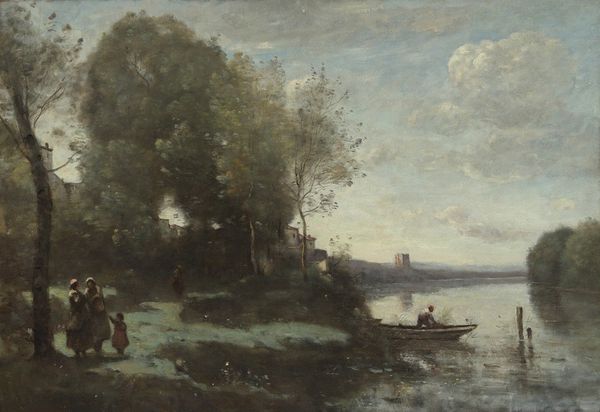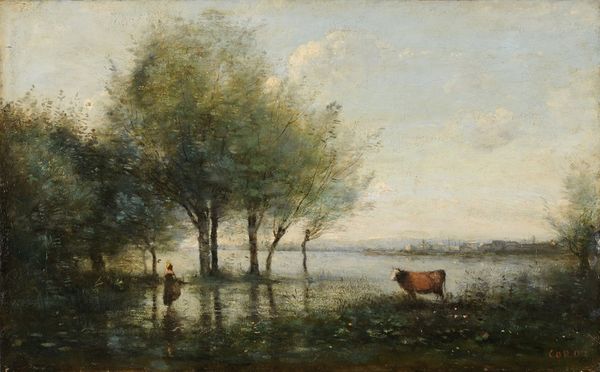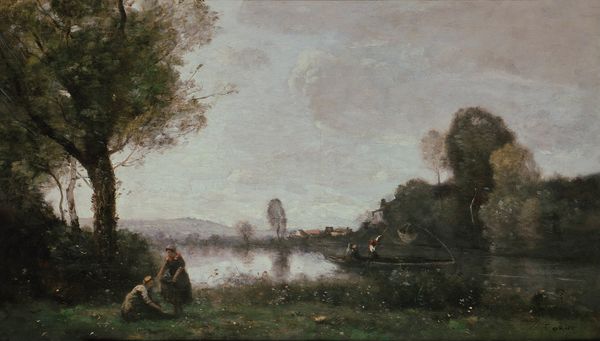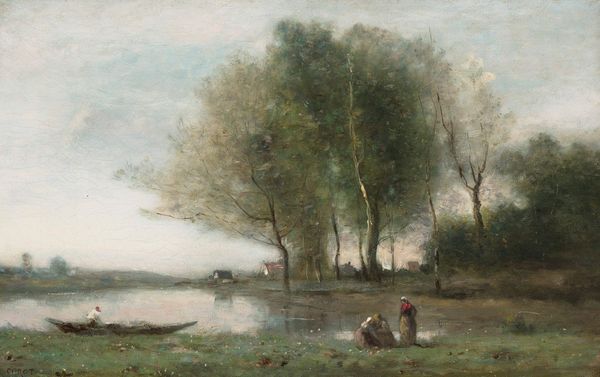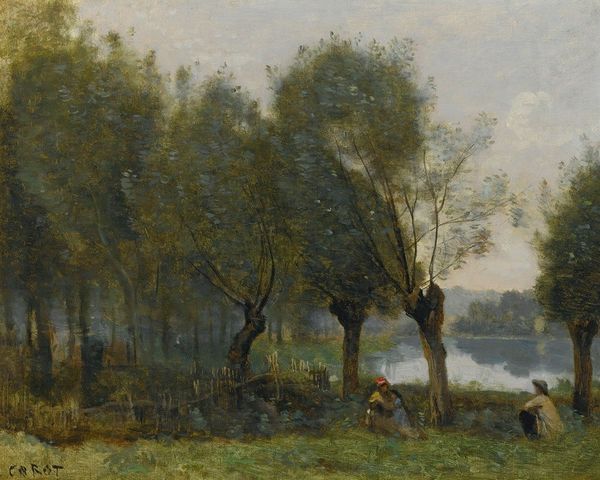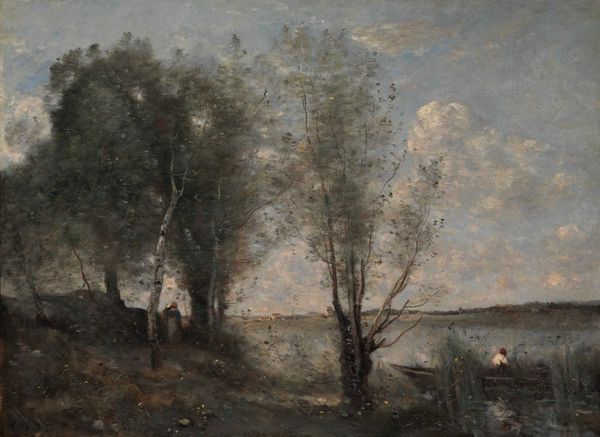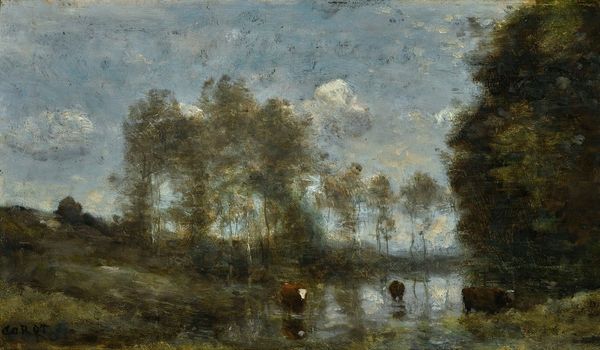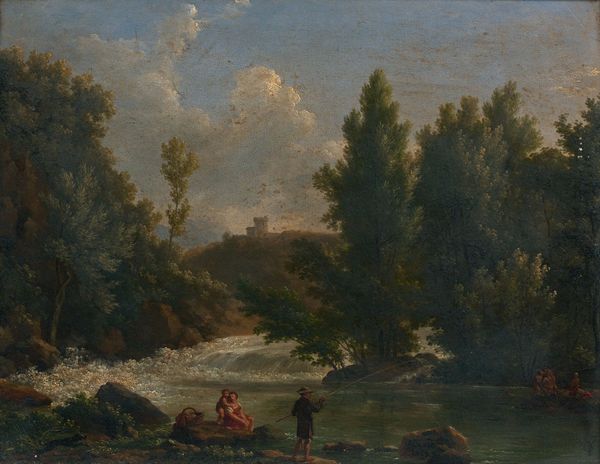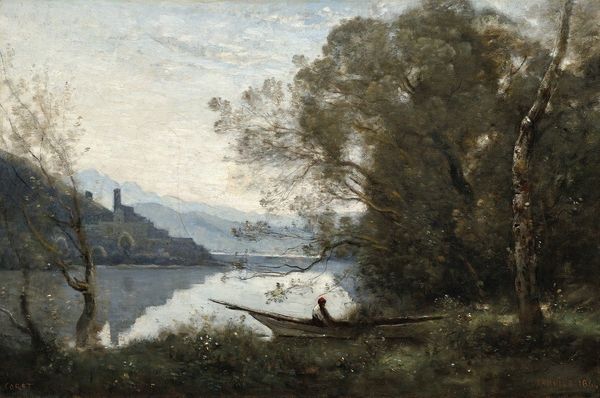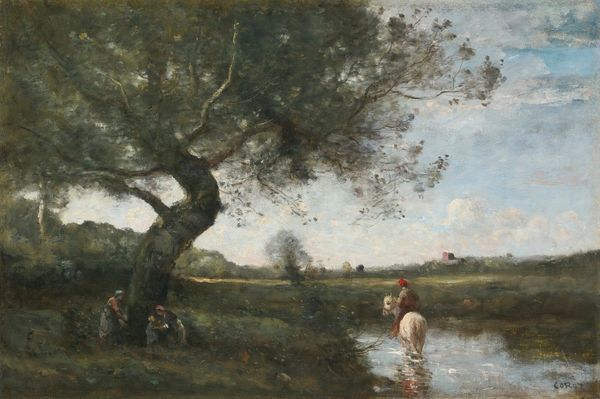
plein-air, oil-paint, impasto
#
impressionism
#
plein-air
#
oil-paint
#
landscape
#
impressionist landscape
#
oil painting
#
impasto
Copyright: Public Domain: Artvee
Editor: We’re looking at “Le pêcheur en barque à la rive,” or “The Fisherman in a Boat by the Shore,” painted between 1860 and 1865 by Camille Corot. It's an oil painting, and it has a very still, tranquil quality to it. What strikes you about this piece? Curator: What’s interesting to me is the date: 1860-1865. Consider what that meant in France. This work comes from the middle of the Second Empire, a time of great social and political change under Napoleon III. There's a definite turn towards industrialization and urbanization that impacted how artists began to look at and depict the landscape. Editor: So, this tranquil scene is reacting against something? Curator: Perhaps. The Barbizon School, which Corot was associated with, offered a turn away from academic history painting and focused instead on direct observation of nature. It was radical at the time. This idyllic scene is thus less an escape and more of a commentary of values placed upon labor and the relationship between human figures and the grand spectacle of the land they work. The figure of the fisherman, almost one with the boat itself, suggests a deliberate intimacy and relationship to place. Think about what was valued in artwork. What stories were considered important, and to whom? Corot offers us a quieter perspective. Editor: I never thought of landscape painting as having so much to say about society! Curator: These paintings provided a source of cultural pride and demonstrated ownership of the land to the ever-growing number of middle-class citizens. These were views meant to promote a cultural and political identity centered on an understanding of land. Editor: That's fascinating, it completely changes how I see Corot and his place in art history. Thanks! Curator: My pleasure. Considering this piece in its social context really enriches its meaning for me as well.
Comments
No comments
Be the first to comment and join the conversation on the ultimate creative platform.
